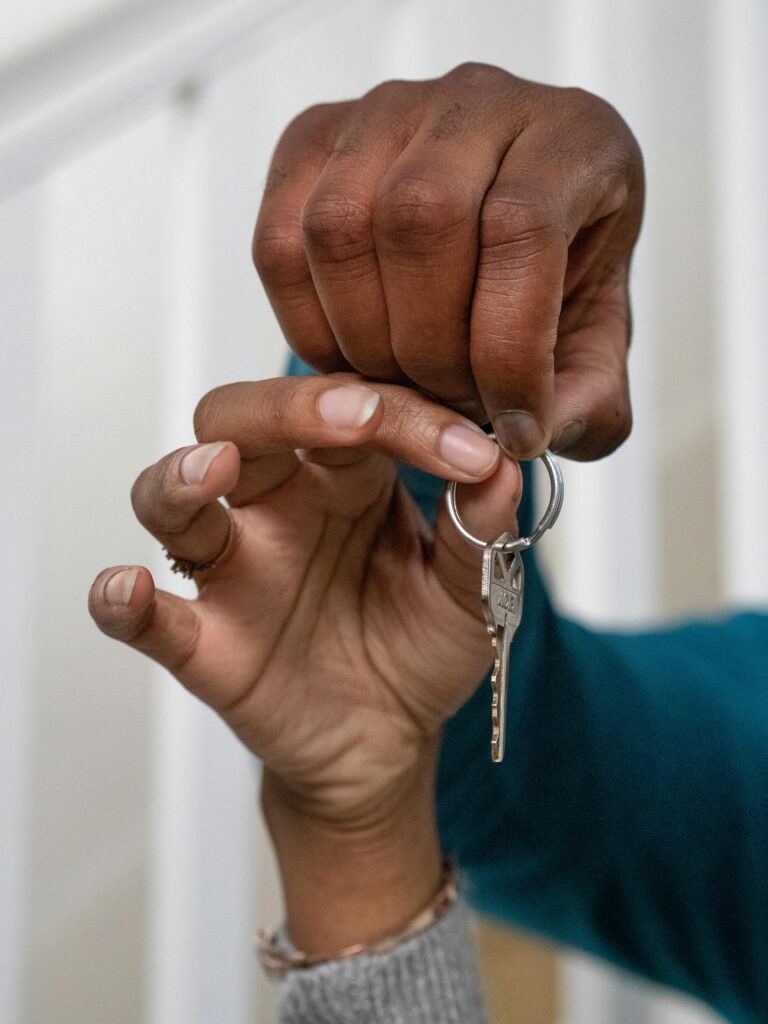Buying your first home is a huge milestone—but it can also feel like stepping into a maze of jargon, numbers, and decisions. To help make the process less overwhelming, here’s a clear and practical 15-step guide to navigate your homebuying journey from start to finish.

01
Make Sure You’re Ready to Buy a Home
Homeownership is more than just a financial investment—it’s a lifestyle change. Ask yourself: Are you planning to stay in one place for at least 3–5 years? Are you ready to handle maintenance, property taxes, and unexpected costs? If yes, you’re off to a strong start.
02
Evaluate Your Financial Health
Take a close look at your finances. What’s your monthly income? Do you have high-interest debt? Lenders will check your debt-to-income ratio (DTI) and credit score, so make sure you’re in good shape. Save at least 3–6 months of living expenses before you start.
03
Build Your Down Payment & Budget
Most homebuyers aim for a 20% down payment, but some programs allow as little as 3–5%. Be realistic about how much you can afford—consider not just the mortgage, but also closing costs, property taxes, HOA fees, insurance, and maintenance.
04
Explore Mortgage Types & Assistance Programs
Research the different types of home loans available:
Conventional loans (typically need good credit)
FHA loans (popular for first-time buyers with lower credit)
VA or USDA loans (for veterans and rural areas)
You may also qualify for down payment grants or reduced-interest programs. Check with local and state housing agencies.
05
Get Pre-Approved for a Mortgage
Pre-approval isn’t the same as pre-qualification—it’s stronger. A lender will review your credit, income, and documents and tell you how much you can borrow. This shows sellers you’re serious and helps you stay within budget.
06
Find the Right Real Estate Agent
A good agent will guide you through the entire process—neighborhood selection, showings, negotiations, and paperwork. They’re typically paid by the seller, so you get their expertise at no cost. Interview a few agents before choosing one you trust.
07
Narrow Down Your Ideal Location
Location matters more than square footage. Consider factors like:
Commute times
School ratings
Future development plans
Walkability and nearby amenities
Spend time in the neighborhoods you’re considering at different times of day to get a real feel for them.
08
Start House Hunting Smartly
Create a checklist of “must-haves” (e.g., number of bedrooms) and “nice-to-haves” (e.g., backyard, home office). Don’t fall in love with the first property you see. Compare several homes and think long-term—what fits your lifestyle and budget best?
09
Make an Offer on a Home
Once you find “the one,” your agent will help you craft a competitive offer. This includes the price, contingencies (like inspections or financing), and your earnest money deposit. Be ready for negotiations or bidding wars in competitive markets.
10
Schedule a Home Inspection
Never skip the inspection! A professional will assess the condition of the home—from foundation to roof. If they uncover problems (plumbing issues, mold, etc.), you can renegotiate with the seller or walk away without losing your deposit.
11
Negotiate Repairs or Credits
Based on the inspection, you may ask the seller to make repairs, reduce the price, or offer a credit toward closing costs. Don’t be afraid to push back—this is your chance to avoid major future expenses.
12
Finalize Your Mortgage Application
Now’s the time to lock in your interest rate and submit any final documents your lender needs. This step is called underwriting. Be prompt with paperwork to avoid delays in closing. Also, avoid big purchases or credit changes until the loan is approved.
13
Prepare for the Home Appraisal
Your lender will order an appraisal to make sure the home is worth the amount you’re borrowing. If the appraisal comes in lower than your offer, you may need to renegotiate or pay the difference out of pocket.
14
Close on Your New Home
Closing day is when all documents are signed and ownership is officially transferred. You’ll review the Closing Disclosure, sign loan documents, pay your down payment and closing costs, and get your keys. Congrats—you’re now a homeowner!
15
Take Care of Post-Closing Tasks
You’re not done yet! Update your address, set up utilities, review your home insurance, and start building an emergency repair fund. It’s also a great idea to create a maintenance checklist to keep your home in good shape over time.
Final Thoughts: Take It Step by Step
Buying a home doesn’t have to be confusing or stressful. With a clear plan, a trusted team, and a bit of patience, you can confidently move from dreaming about your first home to living in it. Whether you’re a few months or a few years away—this roadmap gives you the clarity you need to take the next step.
Ready to start your homeownership journey? Save this guide and take the first step today!



